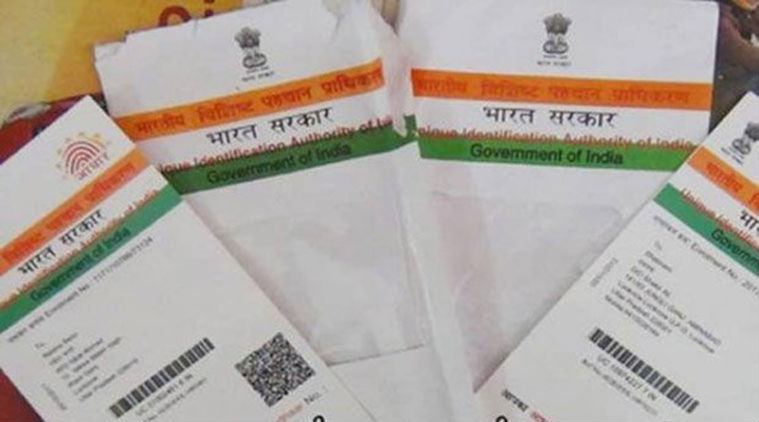Stay updated with the latest - Click here to follow us on Instagram
SC rejects request to extend deadline for Aadhaar linkage to govt schemes
UIDAI chairman Ajay Pandey made a PowerPoint presentation on various aspects of the unique identity, told the bench that “for government systems, the success rate is 88 per cent, for banks it is 95 per cent and for telecom, it is 97 per cent”.
 The court had on March 13 extended indefinitely the March 31 deadline for linking bank accounts and mobile phone numbers with Aadhaar.
The court had on March 13 extended indefinitely the March 31 deadline for linking bank accounts and mobile phone numbers with Aadhaar.
The Supreme Court on Tuesday turned down a request to extend the March 31 deadline for linking Aadhaar with various government welfare schemes. “We are not going to issue any interim orders now,” a five-judge Constitution bench headed by Chief Justice of India Dipak Misra said, responding to a demand by petitioners who have challenged the Constitutional validity of the Aadhaar Act that the last date be extended in view of the large number of authentication failures.
Senior advocates K V Viswanathan and Shyam Divan, appearing for a petitioner, made the request after Ajay Bhushan Pandey, CEO of the Unique Identification Authority of India (UIDAI), the nodal agency for implementing Aadhaar, told the court that the authentication success rate for government systems was 88 per cent.
Viswanathan and Divan contended that while they were under the impression that the authentication failures were only about 23 lakh, Pandey’s revelation showed that the figure was several crores. They demanded that the court should order an extension of the March 31 deadline for subisidies in view of the huge number of rejections as reflected in the new figures.
Attorney General K K Venugopal, however, opposed the demand, saying the authentication failures did not mean rejection of those deserving benefits and added, “there has not been a single case of rejection”. Pandey, who was allowed by the court to make a PowerPoint presentation on various aspects of the unique identity, told the bench that “for government systems, the success rate is 88 per cent, for banks it is 95 per cent and for telecom, it is 97 per cent”.
Asked why the success rate of Aadhaar authentication was lower in government system, he said this was because of some “vested interests” who were spreading misinformation as they were against Aadhaar. Highlighting the greater success rates in commercial activities, he said “the reasons are obvious”.
The court had on March 13 extended indefinitely the March 31 deadline for linking bank accounts and mobile phone numbers with Aadhaar. However, it had allowed the government and its agencies to link the 12-digit national biometric identifier number of the beneficiaries for transfer of benefits of schemes for which funds flow from the Consolidated Fund of India.
Earlier in the day, the bench which also comprised Justices A K Sikri, A M Khanwilkar, D Y Chandrachud and Ashok Bhushan asked Pandey about the security aspects of Aadhaar. Justice Chandrachud expressed concern over possible misuse of user data that may be available with Aadhaar authentication centres.
The judge told Pandey, “security in your database will not necessarily serve the purpose unless the security of the other end can also be ensured and for that we need a legislation which we don’t have now.” “My concern is that there is a mirror image which also has data of my authentication and that is commercially sensitive data,” Justice Chandrachud added.
Pandey pointed out that “core biometric data” of users “is kept anonymised” and “it never comes out of UIDAI”. Even the authenticating agencies were not connected directly to the Central Identities Data Repository, he said. The authenticating agencies send their data to Authentication Service Agencies which then connect to CIDR through leased line, he said adding that the reply also travels in the same route.







